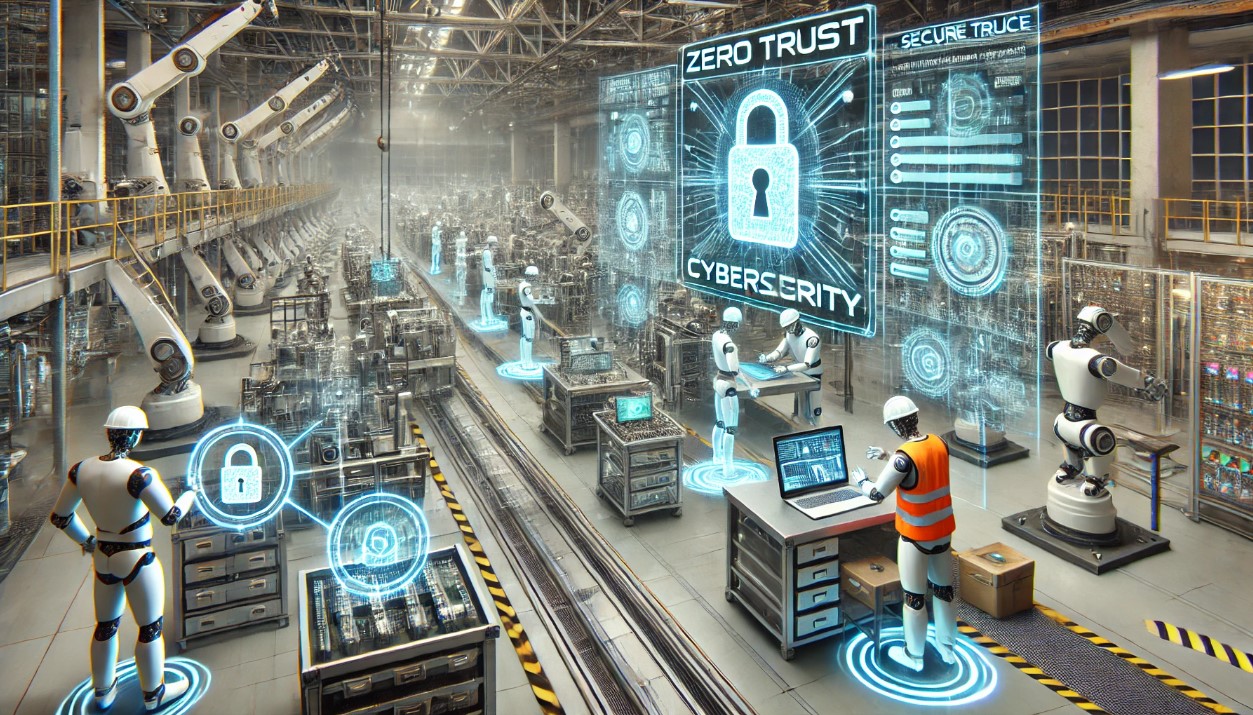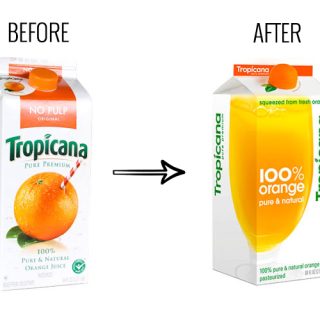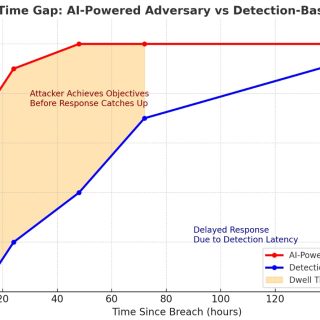
The manufacturing sector, often considered the backbone of any economy, is in the crosshairs of cybercriminals. With the rise of Industry 4.0, manufacturing organizations are becoming increasingly digitized, relying on interconnected systems, IoT devices, and cloud-based workloads. While this evolution unlocks incredible efficiency and productivity, it also opens up vulnerabilities that can cripple operations, compromise intellectual property, and jeopardize supply chains.
Despite this reality, many manufacturers still rely on outdated cybersecurity models. The days of “allow everything” and chasing after potential threats with overwhelming analytics are over. It’s time for the manufacturing sector to adopt a Zero Trust cybersecurity posture—the only viable way forward. Here’s why:
The Problem: Traditional Cybersecurity Models Are Failing
Manufacturing environments are unique, often operating a mix of legacy and modern systems. This complexity creates blind spots in security postures. Traditional models operate on implicit trust, allowing processes, devices, and users to freely communicate within the network unless explicitly flagged as malicious. This reactive approach is riddled with flaws:
- Overwhelming Alerts
Manufacturing organizations are drowning in alerts from security tools. These alerts are not only difficult to manage but also often too late to prevent damage. Cybercriminals thrive in this chaos. - Unknown Threats Slip Through
The most dangerous attacks today are from unknown threats—newly created malware, ransomware variants, or exploits that bypass traditional detection methods. - Chasing the Bad
Relying on analytics to catch “bad” actors means always playing catch-up. It’s reactive, inefficient, and leaves gaps for attackers to exploit.
The Solution: Zero Trust Cybersecurity Posture
There is simply ZERO reason why the manufacturing sector should use anything but Zero Trust Cybersecurity. Unlike consumer computers—where users download games, browse the internet, and execute various applications—manufacturing systems have no such requirement. These computers are designed to run manufacturing processes, not to act as personal workstations.
In manufacturing, a “default allow” posture is unnecessary and counterproductive. Instead, a Zero Trust approach ensures that only authorized processes, users, and systems are allowed to operate. Here’s how it transforms security:
- Protect Every Compute Power
Every endpoint, IoT device, and cloud workload must operate within a Zero Trust framework. This ensures unknown threats are isolated and cannot disrupt operations. - No Trust Without Verification
The Zero Trust approach evaluates every request in real time, whether it’s a CNC machine communicating with a central server or a remote worker accessing manufacturing systems. - Isolate Unknowns Before They Can Do Harm
With solutions like Xcitium’s patented Kernel-level API virtualization, unknown files can execute in a controlled virtual environment without ever touching critical systems. This means manufacturing operations continue uninterrupted while threats are neutralized. - No Room for Unnecessary Risk
By denying all but the necessary processes, Zero Trust ensures that manufacturing systems operate exactly as intended—no more, no less.
No Room for Unnecessary Risk
In a consumer environment, risks are an inherent part of the user experience. Home users and employees often browse the web, download files, install various software, and interact with countless online services. This level of freedom is necessary for creativity, productivity, and leisure, but it inherently opens the door to security risks such as malware infections, phishing attempts, and unintentional downloads of malicious files. While some level of risk is tolerable—and even expected—for consumers, the same cannot be said for manufacturing environments.
In the manufacturing sector, computers and devices serve a completely different purpose. These systems are not built for casual browsing or running random applications; they are mission-critical tools designed to execute specific tasks with precision, consistency, and reliability. From controlling production lines to managing IoT sensors and overseeing supply chain logistics, every piece of compute power is integral to operational success. Allowing unnecessary risks to exist in this context can lead to catastrophic outcomes:
- Operational Downtime
An infected system or disrupted network can halt production lines, resulting in costly downtime and delayed shipments. Unlike consumer environments, manufacturing does not have the luxury of stopping to “fix” a system—it’s a race against the clock to restore operations. - Compromised Data Integrity
Manufacturing relies on precise specifications, formulas, and designs. A single unauthorized change to data or software can lead to defective products, safety hazards, and even regulatory violations. - Intellectual Property Theft
Manufacturing often involves proprietary designs, sensitive supply chain data, and unique processes. Cybercriminals targeting these assets can severely damage a company’s competitive edge and erode customer trust. - Ransomware and Financial Loss
Ransomware attacks are particularly devastating in manufacturing, as they can lock down entire production facilities, forcing companies to either pay exorbitant ransoms or face massive revenue losses from halted operations.
Making Compute Power Do What It’s Designed to Do
By implementing a Zero Trust framework, the manufacturing sector ensures that compute power is focused exclusively on what it’s designed to do—running manufacturing processes, controlling equipment, managing logistics, and optimizing production efficiency. Everything else is explicitly denied.
- Purpose-Driven Security
Zero Trust ensures that only authorized software, processes, and communications are allowed. This eliminates distractions, minimizes risks, and optimizes system performance. Whether it’s a CNC machine or a warehouse management system, every device operates within its intended scope, free from unauthorized interference. - Denial by Default
The Zero Trust model assumes that every interaction, process, or communication is untrustworthy until proven otherwise. This approach denies any activity that falls outside of pre-approved tasks, ensuring no unnecessary or potentially harmful actions take place. - Seamless Isolation of Threats
When an unknown executable or request is detected, it is isolated immediately, preventing it from affecting critical operations. For example, Xcitium’s patented Kernel-level API virtualization enables unknown files to execute in a controlled virtual environment without touching the underlying systems. - Optimized Resource Allocation
By denying extraneous or unauthorized processes, manufacturers ensure that their systems are running at peak efficiency. There’s no wasted compute power on non-essential tasks or dealing with the aftermath of security incidents.
The Benefits: Zero Trust for Manufacturers
- Operational Continuity
With Zero Trust, manufacturing plants can protect production lines from ransomware or malware disruptions. - Secured Intellectual Property
Safeguard trade secrets, proprietary designs, and sensitive customer data from exfiltration. - Regulatory Compliance
Meet stringent industry regulations by ensuring airtight security protocols across all systems. - Scalability for Industry 4.0
As manufacturers adopt more IoT devices and cloud technologies, Zero Trust ensures security scales with innovation.
Why Wait? Zero Trust Is the Era of “Allow Nothing, Protect Everything”
Cybersecurity in manufacturing must evolve. The sector’s reliance on compute power—whether on the shop floor, in the cloud, or at endpoints—demands a Zero Trust posture. Unlike consumer computers that may require flexibility for diverse use cases, manufacturing systems can and should operate within strict security frameworks.
The days of allowing everything and chasing potential threats are dead and gone.
With Xcitium’s Zero Trust approach, manufacturers can lead the way into a secure, productive future. It’s time to stop trusting blindly, isolate unknown threats, and protect the lifeblood of your business—your operations, your data, and your customers.
Welcome to the Zero Trust Era, it isn’t just cybersecurity—it’s operational excellence.



